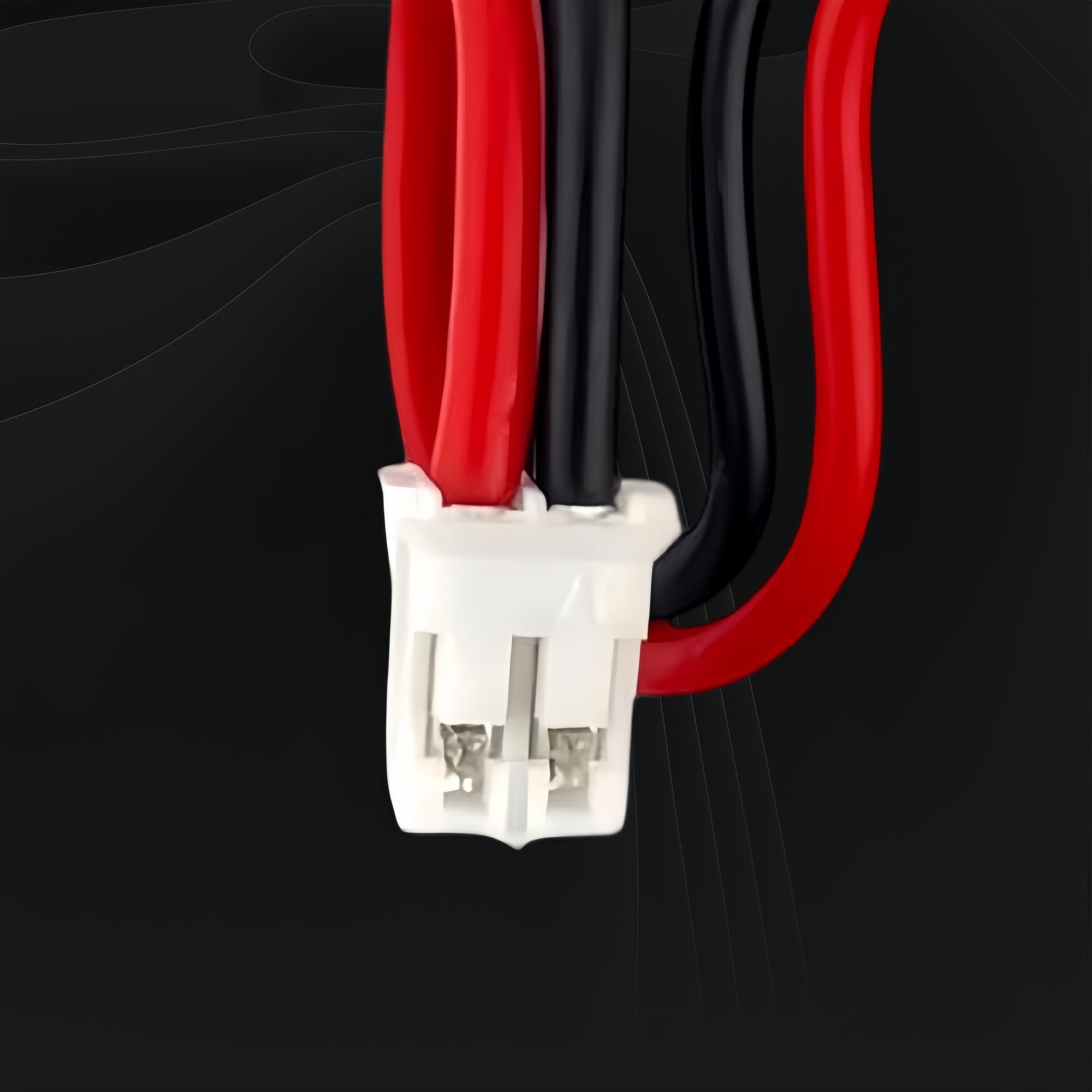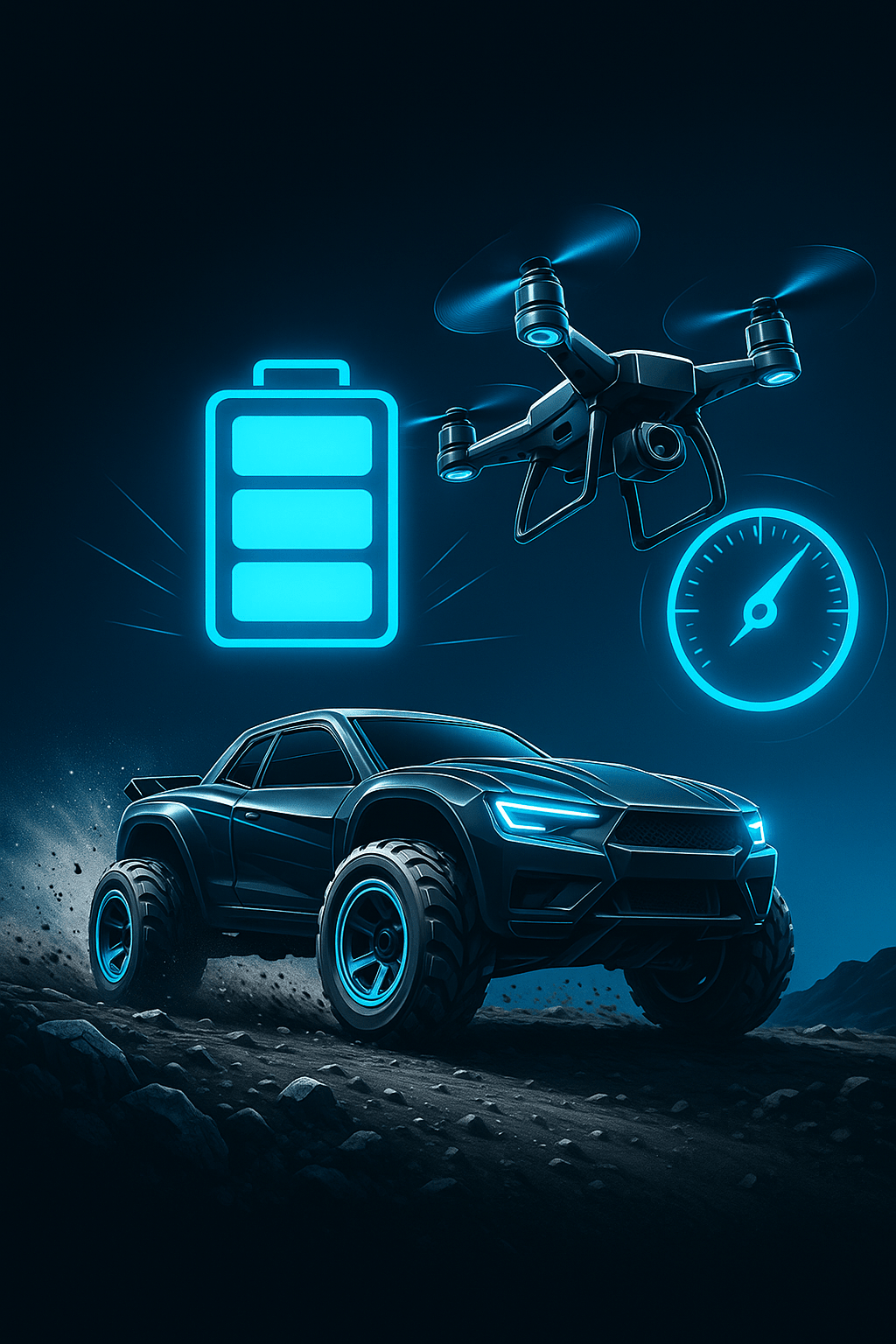When working with batteries that have wire connectors — such as those with JST PH2 connectors, commonly found in small electronics, robotics, and DIY projects — it's crucial to understand the importance of polarity. These batteries often don’t have the obvious markings or physical terminals that you’d find on standard cylindrical batteries like AA or 9V. Instead, they use a more specialized approach with connectors that must be hooked up in the correct direction to ensure safe and efficient operation.
In this article, we’ll break down what battery polarity is, why it matters for batteries with wire connectors, and how to determine the correct polarity for your setup.
What Is Battery Polarity in Connectors?
Polarity refers to the positive (+) and negative (-) terminals of a battery, where the electrical current flows. On most batteries with wire connectors (such as LiPo, Li-ion, or even NiMH batteries), the positive and negative terminals are connected to wires, typically color-coded red (for positive) and black (for negative), that attach to a connector like JST PH2.
- The positive terminal will typically connect to the red wire, and the negative terminal will connect to the black wire.
- The connector itself (like the JST PH2) has a specific pinout — one pin for the positive wire and one for the negative wire.
- A typical positive (also known as standard or forward) polarity connector will have the black wire on the right and the red wire on the left when you face the contact pins (shiny silver tabs) toward you. The connector should be facing upwards and the contact pins are at the top.
Getting the polarity wrong when connecting these batteries can lead to malfunction, damage, or even safety hazards like overheating or short-circuiting.
Take a look at the following picture, showcasing our negative polarity 3.7V 300mAh 702032 battery:

Note that the red wire is on the right, therefore it is reverse (or negative) polarity.
Why Does Polarity Matter for Batteries with Wire Connectors?
The importance of correct polarity with wire connectors is essentially the same as with traditional batteries — reversing the polarity can cause serious issues. But with wire connectors, it's a bit less obvious at first glance, making it more important to pay close attention. Here’s why polarity matters:
-
Device Safety: If the battery is wired backward, the power flow is reversed, which can cause your device to malfunction or even be damaged permanently. In extreme cases, reverse polarity can cause wires to overheat, batteries to leak, or even lead to fires in some battery types (e.g., Li-ion, LiPo).
-
Circuit Protection: Many electronic circuits are designed to operate with a specific polarity. Reversing the connection could cause components like transistors, diodes, or even microcontrollers to fail due to incorrect current flow.
-
Optimal Functioning: The correct polarity ensures that your battery operates in its intended way. Connecting a battery with the wrong polarity can cause reduced performance, erratic behavior, or failure to turn on at all.
-
Battery Lifespan: Incorrect polarity can cause stress on your battery, leading to overheating or even potential damage that shortens its lifespan.
How to Determine the Correct Polarity for Batteries with JST PH2 (or Similar Connectors)
Now that you know why polarity matters, let's dive into how to identify the correct polarity for batteries with wire connectors like JST PH2. These connectors are common in devices like RC cars, drones, and many DIY electronics projects. Here’s how to ensure you’re connecting the wires correctly:
- The positive pin (typically marked with a plus sign or a red wire) is usually located on the side with a plastic tab or latch.
- The negative pin (typically connected to a black wire) will be on the opposite side.
- Red wire = Positive terminal.
- Black wire = Negative terminal.
- Set the multimeter to DC voltage mode.
- Connect the multimeter’s black probe to the negative terminal and the red probe to the positive terminal of the battery.
- If the battery is correctly oriented, the multimeter should show a positive voltage reading.
- If the polarity is reversed, you’ll see a negative reading, signaling that the connections are incorrect.
Common Mistakes to Avoid
- Forcing the Connector: JST connectors, like other wire connectors, are designed to only fit in one direction. Forcing the connector the wrong way can damage the pins or cause shorts.
- Reversing Wires: It might seem easy to simply swap the red and black wires if you’re not sure which goes where, but that can lead to reverse polarity and damage. Double-check before making any changes.
- Ignoring Warnings: If the battery or device has specific warnings about polarity (such as "do not reverse polarity"), take them seriously. These warnings often point to internal circuitry that could be sensitive to incorrect connections.
Conclusion
When working with batteries that have wire connectors like JST PH2, always take extra care to identify the correct polarity. Connecting your battery with the right orientation ensures that your device functions properly and safely, and it helps to protect both your battery and your electronics.
By following the tips we’ve outlined — checking for wire color coding, using a multimeter, and referencing device manuals — you can avoid many of the common pitfalls associated with reversed polarity. Proper battery installation may seem like a small step, but it’s one that pays off by prolonging the life of your device and ensuring its smooth operation.
So next time you're connecting a battery to your project, remember: getting the polarity right is key to powering up your device without any surprises!
Lighting Round: FAQs About Battery Polarity with JST PH2 Connectors
-
What is battery polarity in wire connectors?
Polarity refers to the positive (+) and negative (-) terminals of a battery, where the electrical current flows. Getting the polarity right ensures your device works properly and safely. -
Why is polarity important for batteries with wire connectors?
Reversing polarity can lead to malfunction, overheating, short-circuiting, or even damage to your device or battery. It’s essential for safety, optimal performance, and to protect your electronics. -
How do I identify the polarity of a JST PH2 connector?
The red wire (positive) is typically on the left side of the connector when you face the shiny contact pins, and the black wire (negative) is on the right. Many connectors also have physical tabs or markings to indicate polarity. -
What’s the easiest way to check battery polarity?
Look for physical indicators on the battery and wire: Red = positive, black = negative. If unsure, use a multimeter to check the voltage—positive readings indicate correct polarity. -
What happens if I connect the battery with reversed polarity?
Reversing the polarity can cause the device to malfunction, fail to power on, or even damage internal components like circuits and batteries. It may also cause overheating or short circuits. -
Can I force a JST PH2 connector into the wrong orientation?
No, JST connectors are designed to fit in only one direction. Forcing the connector the wrong way can damage the pins and cause electrical shorts. Always align it properly. -
How do I use a multimeter to check polarity?
Set the multimeter to DC voltage mode. Connect the black probe to the negative terminal and the red probe to the positive terminal. A positive voltage reading indicates correct polarity. -
Are there any devices that show the correct polarity for battery connections?
Yes! Many devices have clear markings near the connector or inside the battery compartment showing the correct polarity (+ and - symbols). Always check these markings before connecting. -
What should I do if I can't find any markings or labels for polarity?
If there are no clear markings, use a multimeter to verify the polarity, or carefully test the connector both ways (though caution is advised to avoid damaging the device). -
Can I damage the device by repeatedly connecting the battery the wrong way?
Yes, repeatedly connecting the battery with reversed polarity can damage both the battery and the device. Always double-check the wiring to avoid costly mistakes. -
Is polarity important for all wire-connected batteries?
Yes, proper polarity is crucial for all batteries with wire connectors, including Li-ion, LiPo, and NiMH batteries. Incorrect polarity can lead to serious issues, regardless of battery type. -
How do I avoid common mistakes when working with battery polarity?
- Don’t force the connector.
- Always check wire colors (red for positive, black for negative).
- If unsure, use a multimeter or consult the user manual.
- Follow any polarity warnings or instructions carefully.
-
Can I use the JST PH2 connector for high-power devices?
The JST PH2 is designed for low-power applications, often found in small electronics and DIY projects. For higher current loads, use a connector rated for more power, such as JST-XH or XT60. -
Where can I find polarity markings on a battery or connector?
Many batteries will have "+" and "-" symbols near the terminals, or the wires themselves may be marked with small labels like “+” or “-”. Always check before making a connection. -
What is the risk of reverse polarity with LiPo or Li-ion batteries?
Reverse polarity with LiPo or Li-ion batteries can cause internal damage, overheating, leakage, or fire hazards. These battery types are particularly sensitive to incorrect polarity, so it's essential to check carefully.










Share:
Understanding How RC Batteries Work: A Look at Battery Cells and Voltage
Understanding Battery Current for RC Vehicles: What’s Best Current for Drones, Trucks, Cars, Helicopters, and More